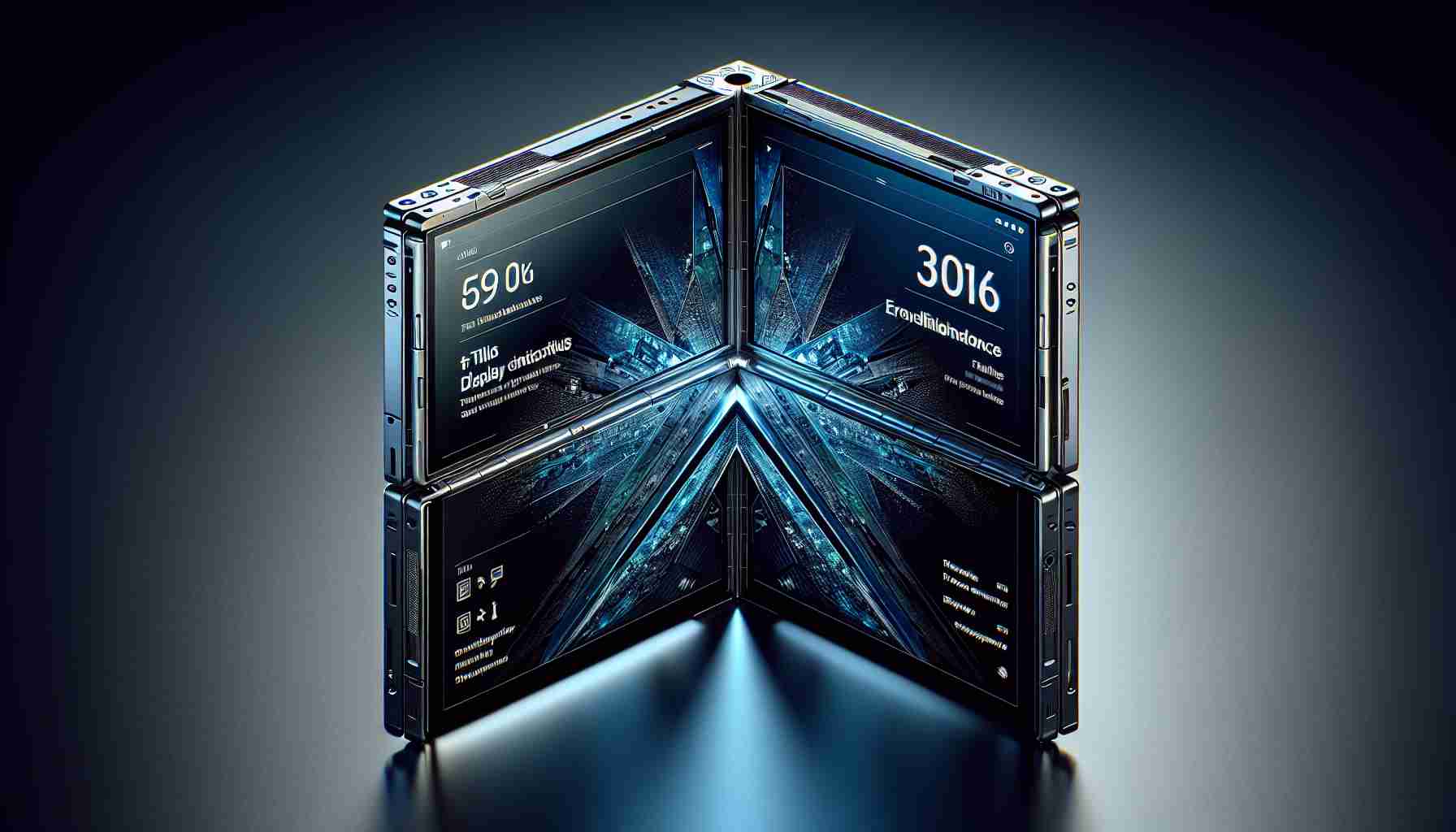Breaking New Ground with Triple Folding Screen
The consumer electronics landscape is witnessing a groundbreaking innovation as TCL steps into the spotlight with a pioneering tri-fold display technology, dubbed as “Free-Type”. The display, which measures 7.85 inches, stands out with its capacity to fold in either a G-shape or a Z-shape, unfolding into a device comparable in size to a standard tablet.
Advanced Display Technologies
This innovative screen is not only about versatility in shape; it incorporates an array of cutting-edge technologies such as Tandem, LTPO, and PLP. These features ensure that the display boasts high brightness levels and energy efficiency, paired with a lifespan that promises longevity. The tri-fold panel itself flaunts an impressive thinness at less than half a millimeter, and even when completely folded, maintains an overall thickness of just 17mm. Its bezels are slender, contributing to a sleek and modern appearance.
Enhanced User Experience and Security
TCL’s ingenuity extends to user convenience and security – their three-fold display integrates a SUP (Sensor Under Panel) face unlock system. This particular design eliminates the need for traditional punch holes or slots, all while maintaining a high pixel density of 420PPI for clear visuals in the active display area. The display also supports a refresh rate of 120Hz, indicative of smooth and responsive user interaction.
The tri-fold display technology, still in the developmental phase, points toward a transformative future in smartphone design with the potential of multifaceted foldable devices entering the market. Although deployment timelines remain speculative, this innovation marks a stride toward expanding the horizons of foldable gadgets.
Context of Foldable Technology in the Market
Foldable technology is rapidly gaining momentum in the consumer electronics space. Companies like Samsung, Huawei, and Motorola have released foldable phones with varying designs, each with its unique set of capabilities and challenges. TCL’s tri-fold display concept sets a new benchmark by taking foldability to the next level, potentially offering more screen real estate when unfolded and a compact form when folded.
Key Questions and Answers:
What is “Free-Type” technology?
Free-Type refers to TCL’s proprietary technology that allows their display to fold in multiple ways without compromising the integrity of the screen.
What makes the TCL tri-fold concept stand out?
Beyond its unique triple folding capability, TCL’s tri-fold concept integrates advanced display technologies for high brightness and energy efficiency, coupled with a sleek, thin design.
Key Challenges and Controversies:
One of the major challenges in developing foldable devices is ensuring durability. While the screens can fold, repeated folding and unfolding can stress the materials and lead to breakage or wear. Additionally, making the folded device not too bulky while maintaining a solid performance can be challenging.
Manufacturing cost is another concern; complex technologies like foldable displays often come with a premium price tag. Finally, there’s the question of market demand—manufacturers need to convince consumers that the benefits of foldable devices justify the likely higher cost.
Advantages and Disadvantages:
Advantages:
– Increased screen size in a compact form factor.
– Enhanced portability and versatility of use.
– Innovative design that could influence future technology in the smartphone industry.
Disadvantages:
– Potential for higher costs due to the complexity of the design and technology.
– Durability concerns as the folding mechanism may wear out over time.
– The device may be thicker and heavier compared to standard smartphones, affecting portability.
For those interested in reading more about TCL and keeping an eye out for further developments in their foldable technology, you can visit their official website through this link. Please make sure to only visit websites you trust, as the security and privacy policies of third-party websites will apply.
